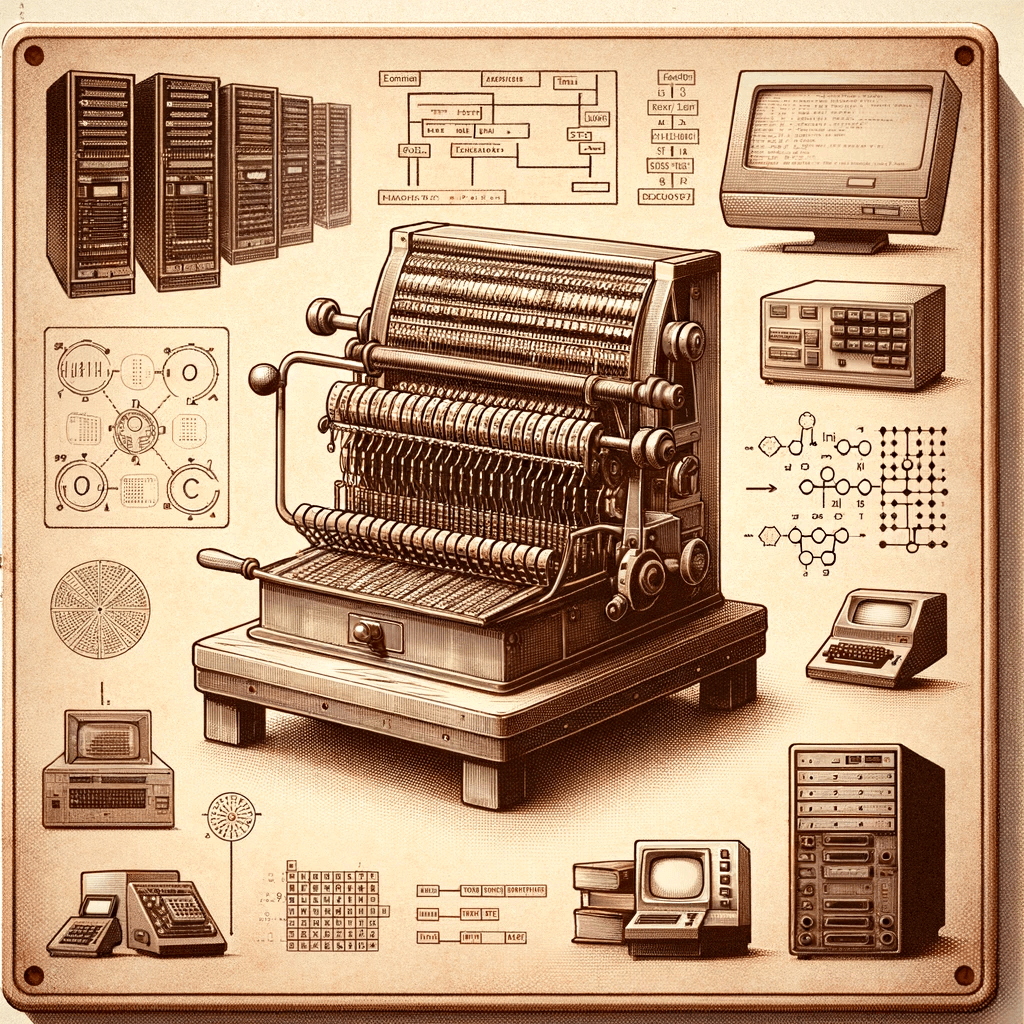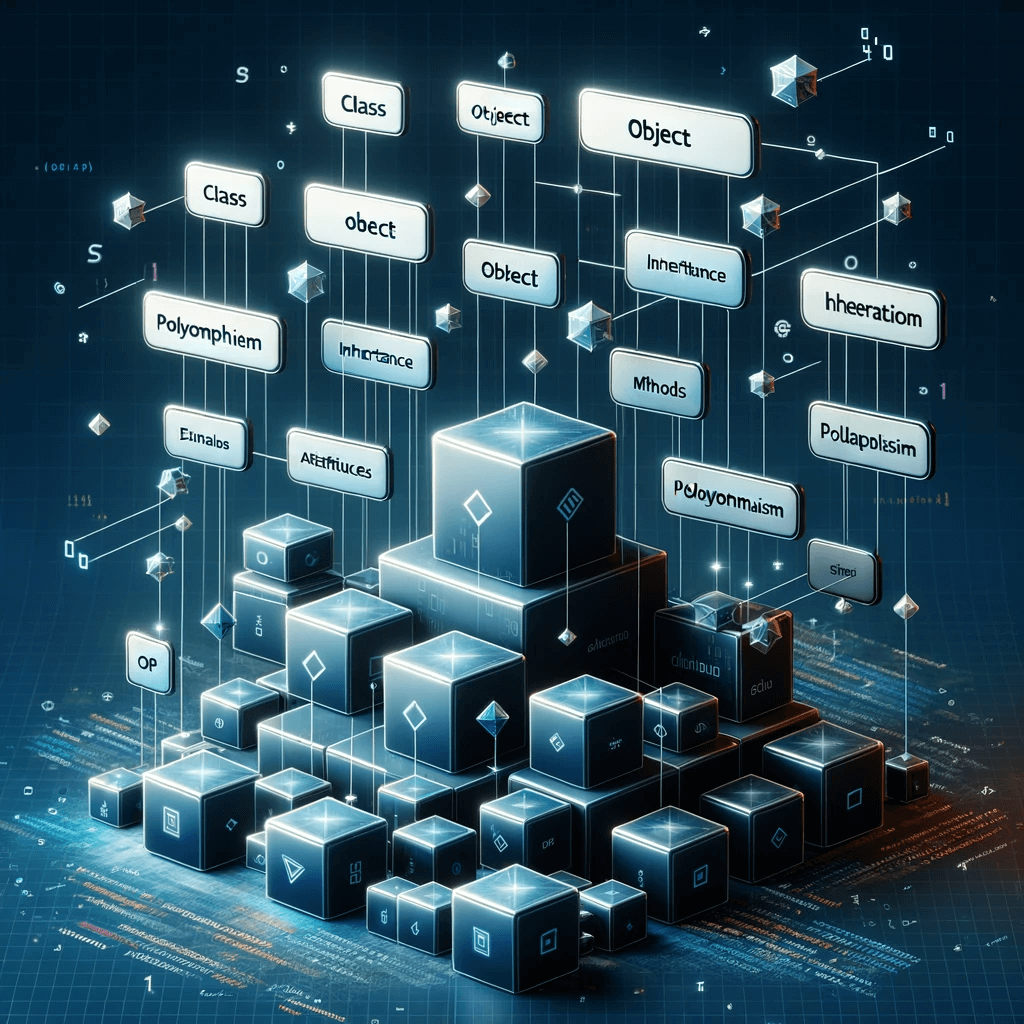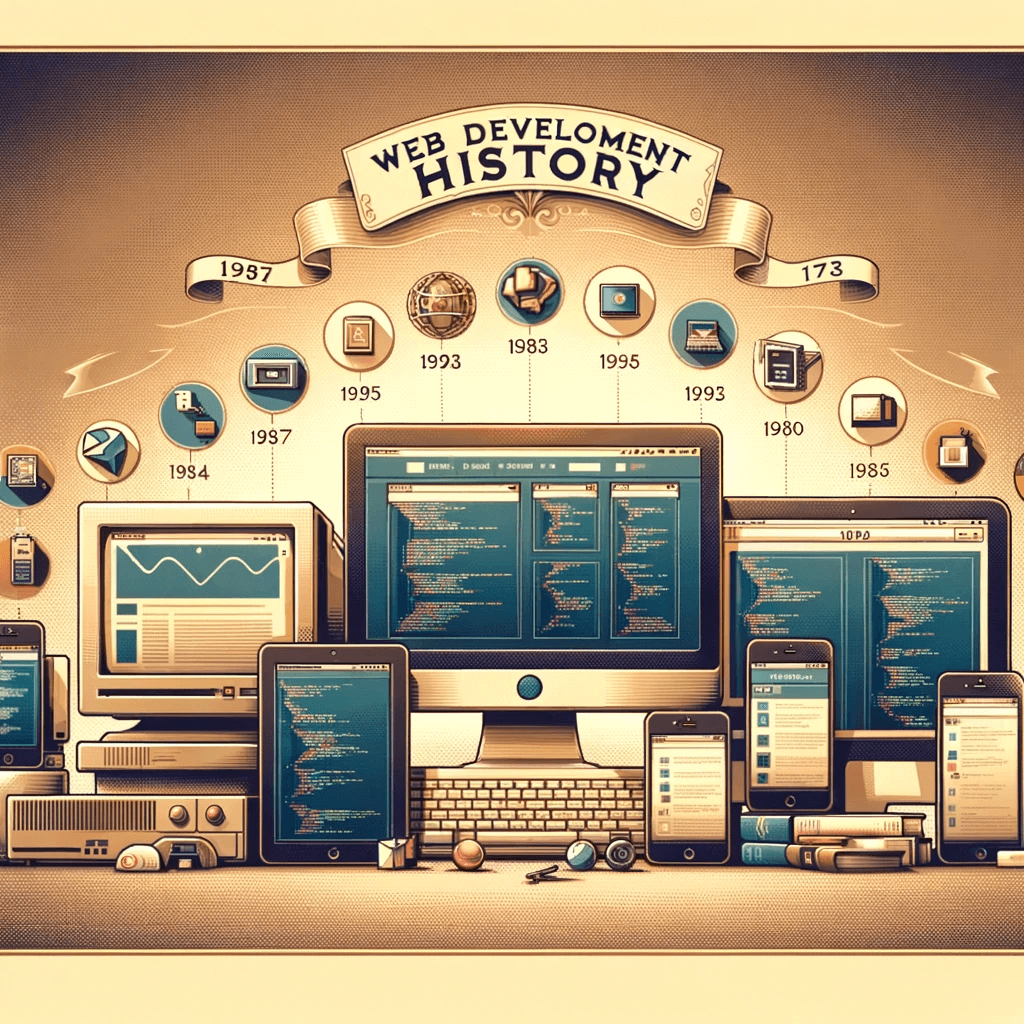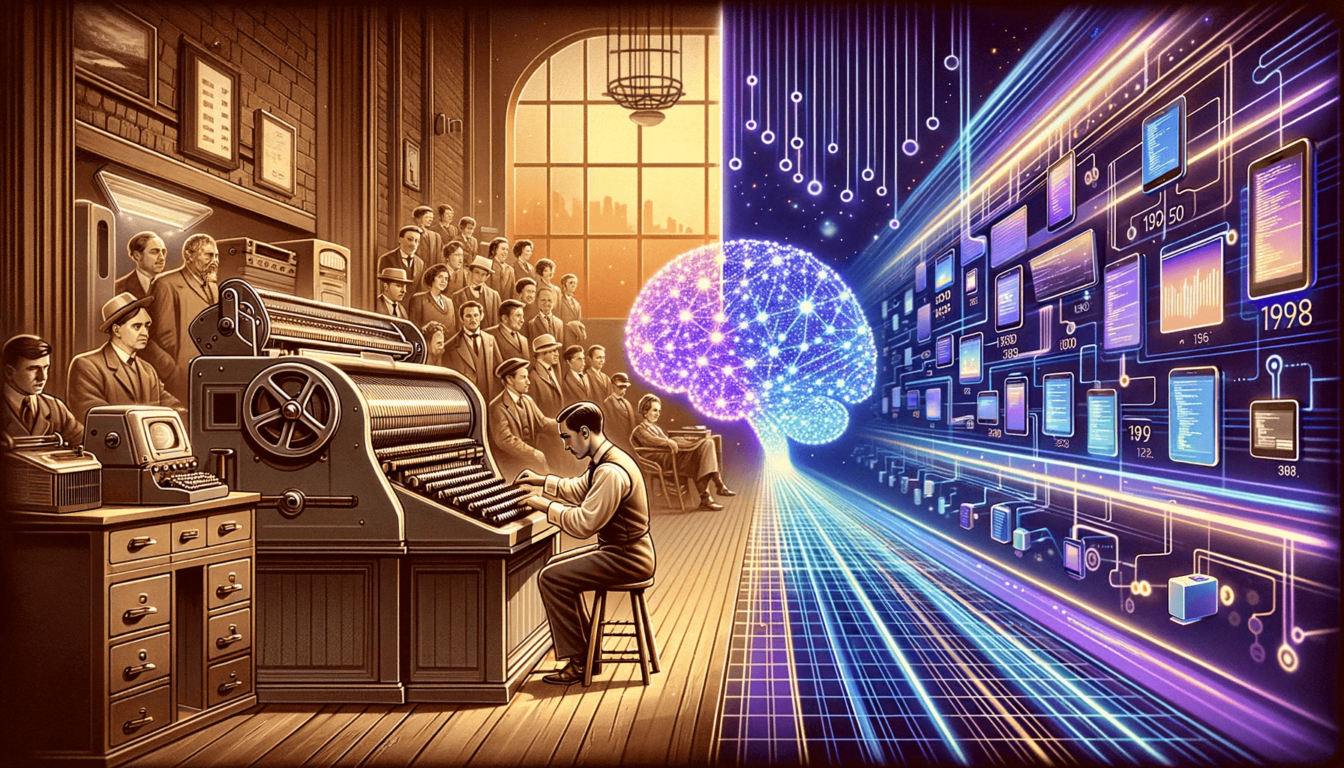The history of software development stretches back over two centuries, paralleling the evolution of computer technology. From primitive punch card programs run on room-sized mainframes to today’s sophisticated applications powered by artificial intelligence, software has come a long way.
This article will explore the major milestones in the evolution of software development – from the early days of programming using machine code and assembly language, to the rise of high-level languages, object-oriented programming, web development, mobile apps, cloud computing, and beyond.
We will also examine some of the key technologies, frameworks, and methodologies that have transformed software engineering best practices over the decades.

The Early Days of Software Development
The origins of programming can be traced back to the early 19th century and the work of mathematicians like Charles Babbage, who conceptualized the idea of a programmable computing machine called the Analytical Engine.
However, software development did not really begin until the arrival of the first electronic computers in the 1940s and 50s. Early programming involved writing machine code and assembly language directly for the hardware architecture. Instructions were entered through switches or punch cards since operating systems and high-level languages had not yet been invented.
Some of the key developments of this era include:
- 1949 – The C-10 programming language, an early version of COBOL, is developed for business applications. COBOL would go on to dominate the mainframe computing world in the 1960s and 70s.
- 1952 – FORTRAN, one of the earliest high-level languages, is released for scientific programming. This increased programming productivity compared to machine code.
- 1959 – The COBOL programming language is introduced for business and administrative systems. COBOL would be widely adopted on mainframe computers for decades.
- 1964 – The BASIC language is created, making programming easier for beginners. BASIC would become popular on early microcomputers in the 1970s and 80s.
In these early days, software development was very labor-intensive and error-prone. However, the introduction of higher level programming languages like FORTRAN and COBOL represented the first steps towards more efficient software creation.
The Rise of High-Level Languages
The 1960s and 70s saw continuing advances in programming languages that dramatically improved software development efficiency.
High-level languages such as C, Pascal, and Java freed developers from low-level hardware details and enabled faster development. Improved programming constructs and data types let developers focus on solving problems rather than writing manual machine code.
Some key milestones included:
- 1969 – Unix operating system written in the C language is developed at Bell Labs. This popularized both C and the concept of portability.
- 1970 – Pascal programming language is released with a focus on teaching structured programming. Pascal provided good portability and ease of learning.
- 1972 – C language is created at Bell Labs to reimplement Unix. C would become the dominant language for systems programming.
- 1980 – C++ adds object-oriented features to the C language. This was a major step on the path towards OOP languages.
- 1995 – Java language is launched by Sun Microsystems for Internet applications. Java offered platform independence and automatic memory management.
The transition to high-level languages with rich features and built-in memory management greatly boosted programmer productivity. However, at this stage, most software was still procedural in nature.

The Introduction of Object-Oriented Programming
The next major leap in software development was the widespread adoption of object-oriented programming (OOP) in the 1980s and 1990s.
OOP allowed programmers to bundle code and data together into reusable objects and build applications by combining objects through inheritance and polymorphism.
Some of the developments included:
- 1985 – C++ adds classes, inheritance, and polymorphism to the C language. This provided a multi-paradigm language supporting both procedural and OOP.
- 1986 – Objective-C programming language is created with a Smalltalk-influenced syntax. It become popular on Apple platforms and led to Swift.
- 1990s – C++ becomes dominant in areas like infrastructure software, drivers, games, desktop apps. OOP improves code organization and reuse.
- 1995 – Java language is launched by Sun Microsystems. Java popularized OOP concepts on the server side through its JVM runtime.
- 1995 – Ruby programming language released in Japan. Ruby would become a popular OOP scripting language alongside Python and PHP.
- 1996 – JavaScript language developed by Netscape. JS provided interactivity in web browsers though it differs from most OOP languages.
The OOP paradigm resulted in a major shift in how large software systems were designed and programmed. It enabled developers to better manage complexity and build more modular and scalable applications.
Web Development and User Interfaces
Another significant change in software history came with the rise of the World Wide Web in the 1990s. New languages and tools emerged to meet the demand for web applications and user-friendly interfaces.
- 1991 – HTML is published by Tim Berners-Lee to create web pages. HTML provided a simple hypertext markup language for the Internet.
- 1993 – Mosaic web browser is released with an intuitive GUI interface. It helped drive mass adoption of the World Wide Web.
- 1995 – JavaScript language developed by Netscape. JS brought dynamic interactivity and richer UIs to web pages within browsers.
- 1995 – PHP released by Rasmus Lerdorf. PHP became the dominant server-side language for web development.
- 1995 – Ruby on Rails web framework released in Japan. Rails drove adoption of Ruby for building database-backed web apps.
- 1996 – CSS 1 specification for web page styling. Cascading Style Sheets allowed customizing the design and layout of web pages.
- 2008 – Google releases Android SDK for mobile development. This catalyzed the growth of mobile apps on smartphones and tablets.
- 2010 – Node.js platform for server-side JS released. Node.js enabled JS to be used on the backend for networking apps.
The rise of the web led to new languages designed for connectivity, interactivity and user experience. Web and mobile development began dominating the software landscape.

Cloud Computing and Full-Stack Development
The next major shift was propelled by the advent of cloud computing in the 2000s. The availability of on-demand infrastructure impacted software architectures and developer skillsets.
- 2002 – Amazon Web Services launches Amazon EC2 cloud computing services. Businesses could now rent virtual compute resources.
- 2008 – Google App Engine provides platform as a service model. Developers could build web apps without managing servers.
- 2009 – Node.js platform enables server-side JS. Full-stack JavaScript development became possible.
- 2014 – Docker containers popularize lightweight virtualization. Containers enable reproducible deployments to any environment.
- 2014 – Amazon releases Lambda serverless functions. Services like Lambda allow running code without provisioning servers.
- 2020s – Microservices and distributed systems gain traction. Large systems are broken into independently deployable services.
As cloud computing matured, software systems became more distributed, resilient, and decoupled. The rise of full-stack development required proficiency in both frontend and backend technologies.
Agile, TDD and DevOps
On the software methodology side, the late 1990s and 2000s saw the rise of agile frameworks like Extreme Programming and Scrum. There was greater focus on rapid iterations, customer collaboration, and lightweight processes over rigid waterfall methods.
Some of the key developments included:
- 1996 – First Extreme Programming project kicks off development with short cycles. XP focuses on simple design, test-driven development, and frequent releases.
- 2001 – Manifesto for Agile Software Development is formulated. Agile favors individuals, working software, customer collaboration and responding to change.
- 2001 – Scrum development framework is formalized for managing Agile projects. Scrum defines roles, events, artifacts and rules for Agile delivery.
- 2003 – Behaviour Driven Development extends TDD for specs in business language. BDD focuses acceptance testing and stakeholder communication.
- 2007 – Continuous integration gains hold for automating builds and testing. CI allows developers to frequently integrate code and get feedback.
- 2010s – DevOps culture and tooling integrates development and IT operations. DevOps aims to increase deployment velocity and uptime.
Agile methodologies, lightweight processes and tighter team collaboration enabled faster iteration and higher quality software.
Outsourcing and Offshore Development
As software came to underpin virtually every industry, there was explosive demand for developers. This led companies to look at outsourcing parts of the software lifecycle to meet resource needs and control costs.
Popular options included:
- Offshore development – Hiring teams in lower cost of living countries like India for significant cost savings. However, language barriers and time zone gaps posed challenges.
- Nearshore development – Locating development teams in nearby regions with cheaper labor and similar time zones – for example Canada for US companies. This helped alleviate some of the communication and coordination issues with offshore teams.
- IT resource leasing – Contracting dedicated developers from staff augmentation firms rather than hiring. This provided more flexible resourcing as project needs changed.
- Freelance marketplaces – Hiring individual freelance developers on demand for specific tasks. Platforms like Upwork and Freelancer made it easier to engage freelancers.
Various forms of outsourcing enabled companies to tap global talent pools and added supply-side elasticity to the software industry.
Start earning effortlessly! Claim your $3 bonus and monetize your unused data with Honeygain. It’s simple, secure, and smart.
Claim Nowand watch your balance grow! 🍯💸

The Role of Modern Software Development Firms
As software began underpinning competitive advantage for companies in every industry, demand exploded for building custom digital solutions. Highly specialized software development firms emerged to meet this need.
For example, firms like xrNORD focus entirely on accelerating software development for clients. They provide:
- Expert teams to strengthen clients’ internal development through staff augmentation.
- Access to global talent pools for difficult engineering skills.
- Faster speed through specialized knowledge and agile delivery processes.
- Cost and risk reduction by leveraging shared best practices.
- Resource elasticity to scale up and down with demand.
By tapping dedicated software development firms, companies can get world-class engineering expertise on-demand for their digital initiatives without the overhead of large permanent teams.
Programming Languages and Frameworks
On the technology front, an explosion of programming languages, frameworks, and platforms have emerged over the past 20 years to meet evolving development needs.
Some of the key developments include:
Web Development
- PHP, Ruby, Python for server-side web programming
- Frameworks like Ruby on Rails, Django, ASP.NET
- JavaScript, TypeScript, CoffeScript for client-side web UIs
- Frontend frameworks like Angular, React, Vue
Mobile Development
- Android SDK for native Android apps in Java/Kotlin
- Xcode SDK for native iOS apps using Swift/Objective-C
- Cross-platform tools like React Native, Xamarin, Flutter
Cloud Platforms
- AWS providing IaaS for cloud computing
- PaaS offerings like Heroku and Google App Engine
- Serverless platforms such as AWS Lambda
The proliferation of languages and tools allows developers to choose the optimal technology stack for each software project based on requirements and constraints.
Full-Stack and Agile Methodologies
The expansion of cloud computing has also catalyzed the rise of full-stack development skills. Full-stack developers have competency across the frontend, backend, infrastructure, databases and other components of modern distributed applications.
Agile software development methodologies like Scrum and Kanban enable faster iteration for full-stack teams. The focus is on delivering working software through rapid builds, testing, and collaboration.
Other trends like microservices architectures and continuous delivery help accelerate the pace of production. Large monolithic apps are broken down into independently deployable microservices that can be developed and updated rapidly.
The combination of full-stack skills and streamlined agile processes allows much faster software delivery to meet today’s rapid market changes.
DevOps in Software Development
The emergence of DevOps has also optimized the software delivery pipeline. DevOps integrates development and IT operations into a unified culture and set of processes.
Some of the key enablers of DevOps include:
- Infrastructure as code – Managing infrastructure through scripts and definition files for reproducibility and consistency.
- Continuous integration and deployment – Automating build, test, and release processes to accelerate software delivery.
- Monitoring and logging – Insight into application performance and usage patterns in production.
- Automation tools – Scripting routine operations like provisioning and configuration management.
By adopting DevOps, engineering teams can deliver innovation faster. They can catch issues early and continually optimize performance and reliability.
The Future of Software Development
Software development has come a immense distance since the first machine code programs were handwritten on paper. Today, exponential technological advances are poised to reshape software engineering yet again.
Some of the emerging trends include:
- Artificial intelligence and machine learning – AI and ML techniques will enable more intelligent and adaptive software applications.
- Low-code/no-code platforms – Empowering business users to build applications through visual tools rather than traditional coding.
- Quantum computing – New quantum programming languages and algorithms will allow solving problems intractable for classical computers.
- Blockchain platforms – Blockchain promises decentralized software architectures with cryptographic trust and smart contracts.
- Biocomputing – Using biological materials like DNA and bacteria for novel computing substrates.
- Autonomic computing – Software systems capable of self-management and automatic reconfiguration.
The next generation of software will be smarter, decentralized and embedded into the physical world. To build this future, developers must stay on top of emerging paradigms.
Conclusion
Over the past 70+ years, software development has undergone radical transformations, from the primitive mainframes of the 1950s to today’s sophisticated cloud-native applications infused with AI.
Each step of this evolution built on previous innovations in programming languages, frameworks, methodologies and infrastructure. Some of the biggest leaps came from technologies like high-level languages, object-oriented programming, graphical interfaces, the web, mobile platforms, cloud computing and machine learning.
Across this history, the focus has remained on increasing developer productivity, software quality and speed of delivery to meet evolving business demands.
To build the software systems of the future, developers must continue embracing new technologies while applying the lessons from decades of software engineering best practices. Adopting modern approaches like full-stack development, microservices and DevOps will be key.
It is an exciting time to be in software development as we stand on the cusp of a new era of intelligent, connected applications. The possibilities are limited only by our imagination.

